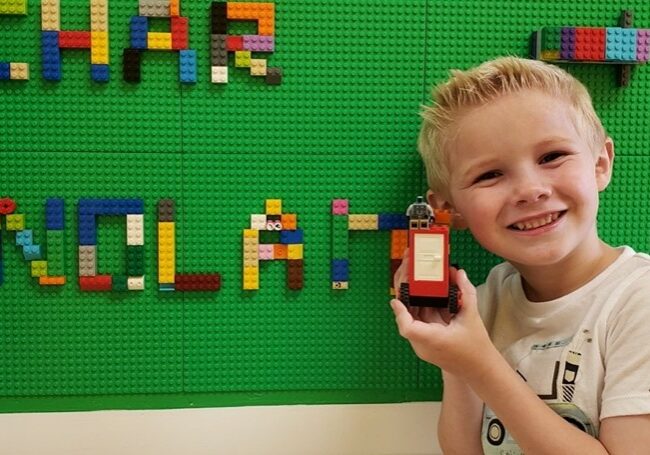By Domenick C. Renzi
Every summer when I was a youngster, I could be found outside playing sports with the neighborhood kids from sunrise to sunset. When the weather didn’t cooperate, I could be found inside building with Lego bricks. As I aged and realized my dreams of being a professional baseball player weren’t going to come to fruition, my love of Lego remained. It has continued to grow during my more than 27 years in education.
Whether it was time spent as a fifth-grade teacher, an elementary supervisor, an elementary principal, or my current role as an elementary math specialist, I love sharing my Lego builds and creations with students.
Lego always found common ground with my math students. After all, Lego does have many math qualities. Bricks and plates are often in the form of arrays and can be used to teach area, perimeter and multiplication. Manipulating Lego bricks also helps to strengthen a student’s spatial relations. Who would have thought that we could learn math and have fun at the same time?
Notices and wonders
A few years ago, I noticed two things in my K-5 school.
First, we seemed to have more students with behavior plans who needed frequent breaks throughout the school day. On occasion, students and paraprofessionals would head to the gym to shoot hoops, if the gym was available. If it wasn’t, a walk around the building would have to suffice until the next break was needed.
Second, my school had a small hallway that was rarely used. The hallway led to the school courtyard but housed old televisions, broken overhead projectors and immovable carts no longer able to be wheeled. It was a true eyesore.
My notices became wonders: “I wonder if this hallway could be put to better use.” “I wonder if this could be an area where students could build with Lego.” This was when I put my two observations together and went to my principal with the idea of turning that hallway into a Lego makerspace.
Simple steps to create a makerspace in your school
A makerspace is a creative prototyping workspace where makers gather to share knowledge, experiment, create, tinker and learn. Creating a makerspace involves simple steps.
First, secure your space. Find an area in your school or classroom you can redesign to foster creativity. For me, that was our unused hallway now assigned to store old and outdated items.
Second, get creative with materials to build a hub of inspiration and activity for your students. Examples include craft paper, markers and crayons, glue, modeling clay and recycled materials. Our makerspace would contain only Lego bricks and plates.
Finally, invite students to explore, create and tinker as they communicate and collaborate with schoolmates.


From a dream to a reality
A Lego makerspace empowers all students, at every grade level, to follow their curiosity wherever it leads them, in a safe, inspiring and instantly accessible environment. My dream of creating a Lego makerspace included bright yellow walls for that small hallway. On the walls Lego plates would be secured on which students could design and build. My school’s maintenance staff helped that dream come true.
The Lego brick, with its simple and intuitive building system, is the perfect prototyping tool. Students start exploring with a handful of Lego bricks and begin to create, test, build and rebuild. As they work toward their ultimate goals, they continuously modify, retest and rebuild.
Necessary for some, beneficial for all
Our Lego makerspace allows for our entire student population to engage in various self-directed activities with a teacher or paraprofessional. The makerspace also serves as an educational opportunity for students with behaviorial plans needing to take a break from the structured environment of a classroom. There was no need to take a walk around the building hoping the gym was available. Now, any student could head to the Lego makerspace at any time during the school day. What was necessary for some students quickly became beneficial to all.
The creation of the Lego makerspace was the first of its kind in my school district as support and funding came from our PTO, community donations and grants. In the following years, the Lego makerspace was duplicated in all the other district elementary schools. Gone were the old televisions, broken overhead projectors and immovable carts. They were replaced with smiling kids, working together to manipulate Lego bricks to design and create whatever they could dream up.
Domenick Renzi is a math specialist at Wedgwood Elementary School in Washington Township. He is the 2018 Gloucester County Teacher of the Year. He can be reached at domrenzi@aol.com.
Benefits of a Lego makerspace
By encouraging playful learning and tinkering, a Lego makerspace:
- Supports the social and emotional development, creativity, and academic skills of your students.
- Builds knowledge, critical thinking and collaboration skills.
- Gives students the chance to be risk-takers and helps them accept and learn from their mistakes.
- Enables an environment of student choice and self-directed learning.
